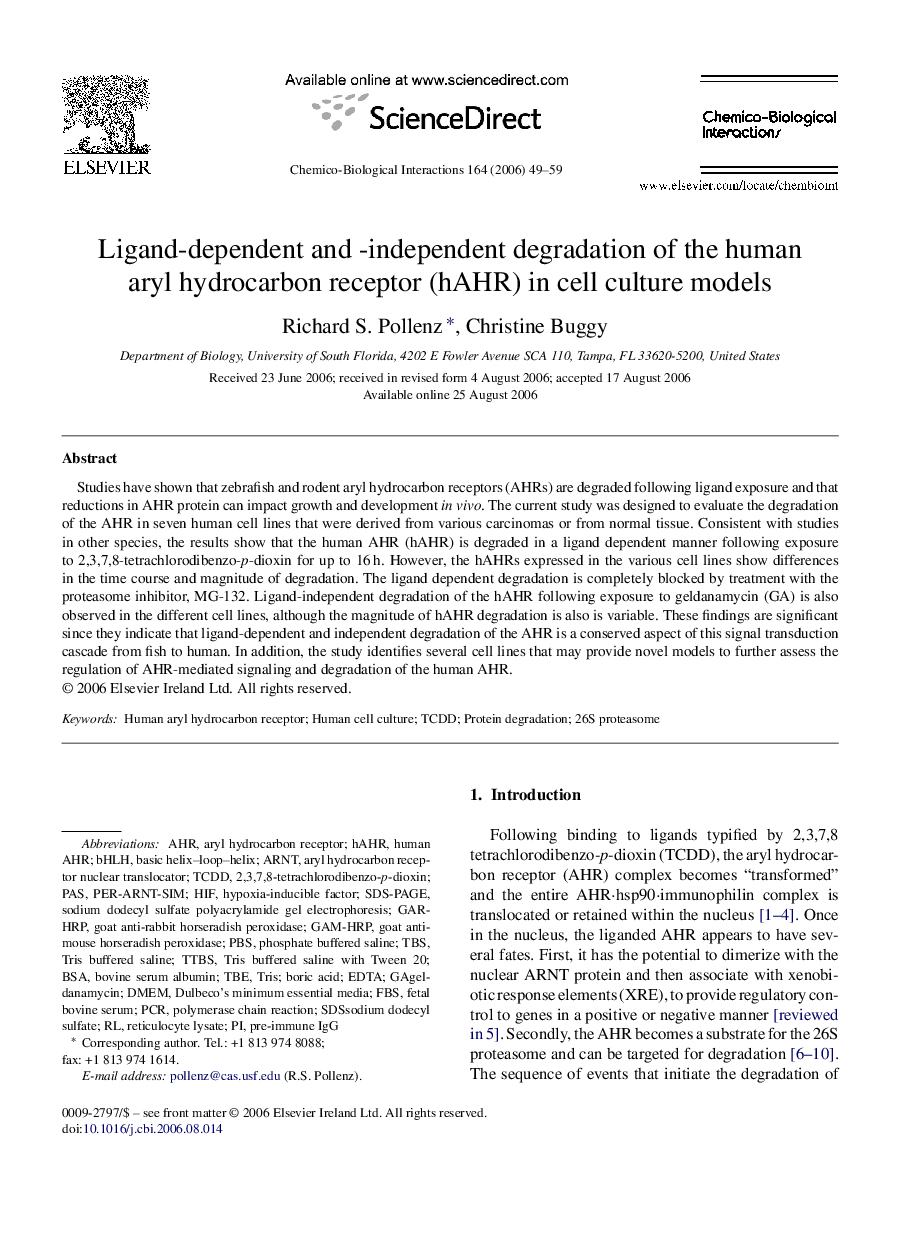| کد مقاله | کد نشریه | سال انتشار | مقاله انگلیسی | نسخه تمام متن |
|---|---|---|---|---|
| 2582288 | 1561656 | 2006 | 11 صفحه PDF | دانلود رایگان |

Studies have shown that zebrafish and rodent aryl hydrocarbon receptors (AHRs) are degraded following ligand exposure and that reductions in AHR protein can impact growth and development in vivo. The current study was designed to evaluate the degradation of the AHR in seven human cell lines that were derived from various carcinomas or from normal tissue. Consistent with studies in other species, the results show that the human AHR (hAHR) is degraded in a ligand dependent manner following exposure to 2,3,7,8-tetrachlorodibenzo-p-dioxin for up to 16 h. However, the hAHRs expressed in the various cell lines show differences in the time course and magnitude of degradation. The ligand dependent degradation is completely blocked by treatment with the proteasome inhibitor, MG-132. Ligand-independent degradation of the hAHR following exposure to geldanamycin (GA) is also observed in the different cell lines, although the magnitude of hAHR degradation is also is variable. These findings are significant since they indicate that ligand-dependent and independent degradation of the AHR is a conserved aspect of this signal transduction cascade from fish to human. In addition, the study identifies several cell lines that may provide novel models to further assess the regulation of AHR-mediated signaling and degradation of the human AHR.
Journal: Chemico-Biological Interactions - Volume 164, Issues 1–2, 1 December 2006, Pages 49–59